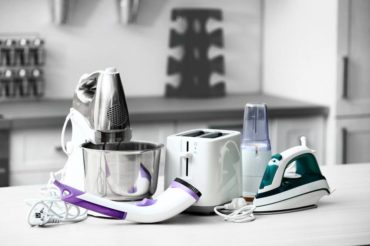 Nearly two-thirds of American homeowners are living without a critical safeguard. According to data from the National Association of Insurance Commissioners, just 34 percent of U.S. homeowners have taken a home inventory. That leaves 66 percent, or two-thirds, who lack this important protection.
Nearly two-thirds of American homeowners are living without a critical safeguard. According to data from the National Association of Insurance Commissioners, just 34 percent of U.S. homeowners have taken a home inventory. That leaves 66 percent, or two-thirds, who lack this important protection.
For the millions of Americans who haven’t conducted home inventories, they could lose out on thousands of dollars in payouts from their home insurance policies if a tornado, fire or other disaster damages or destroys their possessions.
Without a home inventory, it’s more difficult for an insurer to determine which of your belongings deserve to be covered as part of your home insurance claim.
Why bother assembling a home inventory?
“Because preparing an inventory after a total loss for insurance or taxes is very painful, difficult and time-consuming,” according to United Policyholders, a nonprofit organization for insurance consumers. “And, especially after a traumatic loss, it’s impossible to remember everything you had, so most people never collect their full insurance benefits.”
Here are seven tips for creating a home inventory that can give you peace of mind when disaster strikes.
1. Select a way to keep the inventory.
While paper and pencil can do the trick, you’ve got other (and better) options for listing your home inventory.
One of them is a free inventory app offered by the National Association of Insurance Commissioners. The app lets you go room by room to photograph possessions and capture descriptions of the items. After you’re done, the inventory is stored electronically.
Also available is an Excel spreadsheet from United Policyholders that enables you to build a home inventory.
If you’d still prefer to go the old-fashioned route, the National Association of Insurance Commissioners provides a printable inventory checklist.
Regardless of which method you choose, be sure to stash the inventory in a safe place — a cloud-storage system, a computer hard drive, a fireproof box or a safe deposit box. In addition, consider emailing the home inventory to a relative, a friend or your insurance agent, United Policyholders says. Also email a copy to yourself.
2. Start small.
Doing a home inventory can feel overwhelming, especially if you’ve lived in your house for several years. To ease your anxiety, begin the inventory in a contained space, like a small appliance cabinet in your kitchen, and not in a large space such as your living room, the Insurance Information Institute recommends.
You want your home inventory to be as thorough as possible. But don’t be hard on yourself if you don’t end up inventorying every single item in your house. United Policyholders stresses that “doing at least something to prepare is always better than doing nothing at all.”
To get the job done, cloud-storage provider Collectify suggests inventorying your home in 20-minute increments. Once your allotted time (120 minutes, for example) has expired, be sure to keep track of where you left off.
The entire task doesn’t have to be completed in one day. You could finish just one room at a time until the whole inventory is finished.
3. Group your possessions.
The National Association of Insurance Commissioners suggests putting your belongings into various buckets. For instance, you might place a collection of possessions in the “hobby” category or the “living room” category.
For clothing, organize pieces by general category, the Insurance Information Institute recommends. For instance, you might document “five pair of jeans” or “three pair of sneakers.”
Note any items that are worth a lot of money. This approach also can apply to belongings like books, bed linens and kitchenware.
Robert Hunter, director of insurance at the Consumer Federation of America, told CNBC.com that a home inventory doesn’t need to be extremely detailed. “Insurance companies aren’t going to ask you to prove that you had eight forks instead of six,” he said.
4. Remember the receipts.
Gather copies of sales receipts and appraisal documents to help document the value of your items. Also, take note of model and serial numbers.
Keep the receipts and appraisals in a secure place, such as a fireproof box or an off-site safe deposit box. You also can scan or photograph them and convert them into digital images that can be stored electronically.
5. Take a visual inventory.
Photograph or videotape your belongings as you “tour” your home. Include a short description of each item or group of items, including the age, purchase price and estimated current value. Pay particularly close attention to valuable or irreplaceable possessions like jewelry and artwork.
Oh, and don’t forget to open drawers and closet doors to visually document what’s inside, and don’t overlook belongings in the attic, the basement or an off-site storage unit.
6. Keep the inventory current.
As you accumulate or get rid of belongings, be sure to update your home inventory. This should include purchase receipts for new items, like a home theater system or a dining room table. One recommendation is to update the home inventory at least once a year.
7. Review your coverage.
Once you’ve wrapped up the home inventory, check your insurance policy to ensure you’re adequately covered. For instance, you might need to purchase what’s known as a rider — an add-on to your basic policy — to boost coverage for your jewelry.
Keep in mind that a home inventory is less useful if your coverage falls short of the actual value or replacement value of your possessions.




























